Artificial intelligence application eliminates sinusitis that erodes the eye socket, saving the patient's vision
Mr. Hoang had undergone sinus surgery 5 years ago due to complications of sinusitis that caused mucocele to invade the eye socket. Recently, he has been experiencing constant pain in the eye socket, reduced vision, and recurring sinusitis whenever the weather changes.
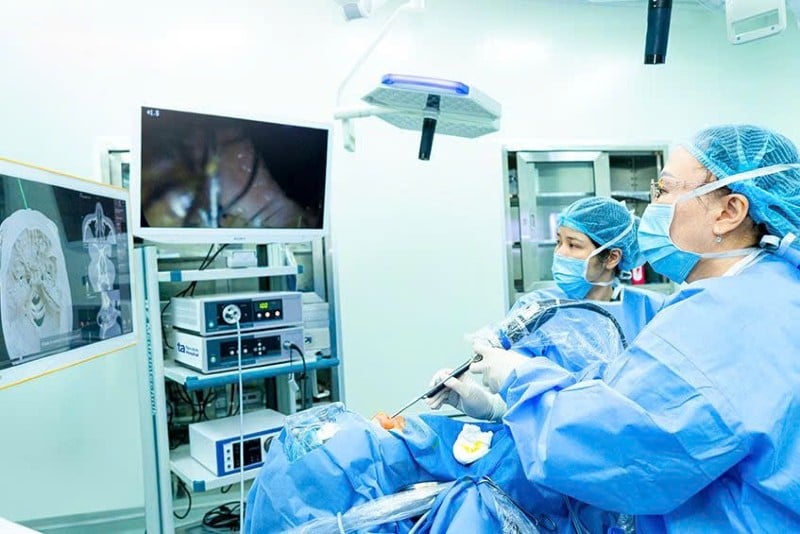 |
| Illustration photo. |
Thinking he had an eye disease, he went to many places for treatment but was only given symptomatic treatment. When the condition became more serious, with swelling in his eyes and a significant loss of vision, Mr. Hoang went to the hospital for a check-up.
The 1975-slice CT scan showed a space-occupying lesion, filling the left frontal and anterior ethmoid sinuses, causing erosion of the outer walls of the sinuses and compressing the deep fatty tissue in the eye sockets, blocking the sinus openings. The patient was diagnosed with complicated recurrent pansinusitis and was scheduled for surgery because medical treatment was no longer effective.
Before surgery, the patient's CT scan image is entered into a three-dimensional positioning system (IGS) integrated with artificial intelligence. AI technology scans and recreates the 3D anatomical structure of the face, synchronized with the actual image during the endoscopy.
Thanks to that, the surgeon can simultaneously observe the endoscopic image and the 3D image simulating the sinus area in detail, providing maximum support for operations in narrow spaces, close to important structures.
According to Professor Tran Phan Chung Thuy, an otolaryngologist who directly performed the surgery on the patient, after endoscopy, the old sinus surgery site was found to be secreting fluid and the throat was congested. In addition, orbital fat is normally located deep in the eye socket and is protected by a layer of paper bone. However, due to prolonged inflammation that was not controlled, the inflammatory tissue destroyed this layer of bone, creating a hole between the sinus and the eye socket.
If not treated promptly, the patient may face dangerous complications such as orbital cellulitis, orbital abscess, and even loss of vision.
Because the surgical area is close to important structures such as the eye socket, optic nerve and skull base, and the anatomy has been altered by the previous surgery, the operations are performed meticulously and carefully to preserve the maximum function of these organs.
The surgery ended after more than an hour. After the surgery, Mr. Hoang no longer had pain in his eye socket, his vision was preserved, his health was stable, and he was discharged from the hospital after only one day. Regular check-ups showed that the surgical wound was healing well, with no signs of complications.
Professor Chung Thuy recommends that for those who have had sinus surgery, post-operative care and prevention of recurrence is extremely important. The sinus structure after surgery has been opened for better drainage, but if the nose and throat are not cleaned properly, if you are frequently exposed to dust, chemicals, or live in an environment with sudden changes in weather, the nasal mucosa can easily become inflamed again.
Doctors advise patients to wash their nose daily with saline, maintain humidity in the room, avoid cigarette smoke, ice and irritants. At the same time, regular check-ups are needed so that doctors can monitor, detect and treat inflammation early, prevent complications and reduce the risk of re-surgery.
After two eye exams, the boy was discovered to have a rare nephrotic syndrome.
Recently, a hospital in Ho Chi Minh City received a case of a baby boy under one year old with prolonged eyelid swelling, initially misdiagnosed as conjunctivitis. However, after a thorough examination and specialized tests, the baby was diagnosed with nephrotic syndrome, a rare disease in this age group.
According to the mother, Thai had previously had symptoms of frequent urination during the day, for unknown reasons. About 10 days before being admitted to the hospital, his eyelids were slightly swollen. The family took him to two eye clinics, where he was diagnosed with conjunctivitis and prescribed medication. However, his condition did not improve. After that, the swelling began to spread to his limbs, and his abdomen became distended, so the family took him to the hospital for examination.
Here, the ultrasound and urine test results showed that the amount of protein in the baby's urine was abnormally high, up to more than 200 mg/mmol. Associate Professor, Dr. Vu Huy Tru, Vice President of the Vietnam Pediatric Nephrology Association, Head of the Pediatrics Department, Tam Anh General Hospital System, diagnosed the baby with nephrotic syndrome. He said that the swelling that starts in the eyelid area, then gradually spreads throughout the body is a typical symptom of the disease. Eyelid swelling often appears clearly in the morning, easily causing parents and doctors to confuse it with ophthalmological diseases.
Associate Professor, Dr. Vu Huy Tru added that nephrotic syndrome can occur at any age, but is more common in children from 1 to 12 years old, especially boys. Cases under 1 year old like Thai's are very rare, and are often related to genetic mutations, making treatment more difficult.
Baby Thai was treated with a corticosteroid regimen for 4.5 months. At the same time, the doctor ordered a gene test to determine the cause of the disease. The results showed that the baby did not have a gene mutation, a positive sign for the treatment.
However, Associate Professor, Dr. Vu Huy Tru warned that if not detected and treated promptly, nephrotic syndrome can cause many dangerous complications such as embolism, malnutrition, anemia, acute kidney failure, infection and endocrine disorders such as hypothyroidism.
After a month of treatment, baby Thai responded well to the medication, the swelling has gone away, however there is still proteinuria (protein in the urine), requiring continued treatment and close monitoring.
Nephrotic syndrome is a condition in which damage to the glomeruli causes a large amount of protein, mainly albumin, to escape from the blood and be excreted in the urine, reducing blood protein, leading to edema throughout the body. In addition to genetic causes, the disease can also be caused by factors such as infection, autoimmune disease or side effects of drugs.
In children under 1 year of age, nephrotic syndrome is often associated with rare genetic mutations that affect the structure and function of the glomeruli. The incidence is very low, only about 1-3 children per 100,000. Common symptoms include swelling of the eyes, face, abdomen, lower limbs, foamy urine, rapid weight gain, fatigue and loss of appetite.
Treatment of nephrotic syndrome in infants and young children is often more complicated than in older children. In cases that do not respond to corticosteroids (called "steroid resistance"), the child will be treated with supportive measures such as albumin replacement, edema reduction, nutritional supplementation, infection prevention and anticoagulation. If the disease progresses to end-stage renal failure, the doctor will consider removing the kidney and preparing the child for a kidney transplant.
Associate Professor, Dr. Vu Huy Tru warned that nephrotic syndrome is difficult to prevent because most cases are only detected when there are obvious signs. Parents need to pay attention to abnormalities such as swelling of the eyelids, body, changes in urine volume, unusual weight gain... and take their children to medical facilities with pediatrics for early diagnosis and timely treatment.
Shocked to discover kidney stones after rapid weight gain
Mr. Manh (HCMC) is 1m73 tall and previously weighed about 70kg. However, in just two years, his weight skyrocketed to 96kg without any obvious symptoms, except for his “visible belly”. Because of his sedentary office job, he did not notice this change until his body started to “speak up”.
About four months ago, Mr. Manh suddenly had severe pain in his lower back and left hip, and had to go to the emergency room. There, doctors discovered three stones in his left kidney, ranging in size from 3-9 mm. The largest stone (9 mm) had fallen into the ureter, causing blockage and leading to “kidney pain” - the pain typical of kidney stones moving through the urinary tract.
The patient was prescribed medical treatment, using drugs to help expel the stones through the urinary tract. At the same time, the doctor recommended that he lose weight because obesity is one of the leading risk factors for kidney stones. If weight is not controlled, the possibility of recurrence of stones is very high.
Mr. Manh then went to the hospital for a comprehensive check-up. Dr. Tran Huu Thanh Tung, an endocrinologist, said that Mr. Manh was at level 2 obesity, with a body mass index (BMI) of 32.1 kg/m2, and visceral fat of up to 161.1 cm2, 1.5 times higher than the safe threshold.
In addition, tests also showed that Mr. Manh had increased uric acid, grade 2 fatty liver, lipid disorders, sleep apnea, and pre-diabetic blood sugar levels, all of which are common consequences of long-term obesity.
Explaining the link between obesity and kidney stones, Dr. Tung said that obese people often have changes in the composition of urine, including increased levels of calcium, uric acid, and oxalate, the main components that form kidney stones. In addition, insulin resistance, common in obese people, also increases the risk of stones, especially uric acid stones.
Unhealthy eating habits, using a lot of processed foods, fast foods, foods high in salt and sugar also contribute to increasing the risk of stone formation. Therefore, weight loss and lifestyle adjustments are important solutions to prevent and treat the disease effectively.
Mr. Manh was thoroughly advised by the doctor about diet, lifestyle, and the combination of drugs to support safe and sustainable weight loss.
Following the guidance of a nutritionist, he started to cut down on alcohol, stopped snacking at the office like before, increased his water intake to reduce hunger, and added healthy foods such as unsweetened fresh milk, yogurt, low-sugar fruits, and green vegetables.
Due to his busy work schedule, he doesn’t have time to exercise regularly, so he chooses light exercises: walking on weekends, jumping rope for 10-15 minutes every day. After only two months of following the doctor’s weight loss regimen, Mr. Manh surprisingly lost 12 kg without feeling tired or exhausted.
“If possible, I want to lose weight back to 70 kg like before. I know it is not easy, but I will try to follow the regimen that the doctor instructed,” Mr. Manh shared.
According to Dr. Tran Huu Thanh Tung, just losing 5-10% of body weight can help overweight and obese people significantly improve accompanying diseases such as diabetes, kidney stones, fatty liver, metabolic disorders, sleep apnea and overall mental and physical health.
Source: https://baodautu.vn/tin-moi-y-te-ngay-1810-ung-dung-tri-tue-nhan-tao-loai-bo-viem-xoang-cuu-thi-luc-benh-nhan-d415022.html


![[Photo] Chairman of the Hungarian Parliament visits President Ho Chi Minh's Mausoleum](https://vphoto.vietnam.vn/thumb/1200x675/vietnam/resource/IMAGE/2025/10/20/1760941009023_ndo_br_hungary-jpg.webp)
![[Photo] Prime Minister Pham Minh Chinh meets with Speaker of the Hungarian National Assembly Kover Laszlo](https://vphoto.vietnam.vn/thumb/1200x675/vietnam/resource/IMAGE/2025/10/20/1760970413415_dsc-8111-jpg.webp)



![[Photo] National Assembly Chairman Tran Thanh Man holds talks with Hungarian National Assembly Chairman Kover Laszlo](https://vphoto.vietnam.vn/thumb/1200x675/vietnam/resource/IMAGE/2025/10/20/1760952711347_ndo_br_bnd-1603-jpg.webp)






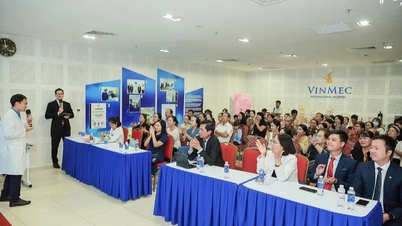

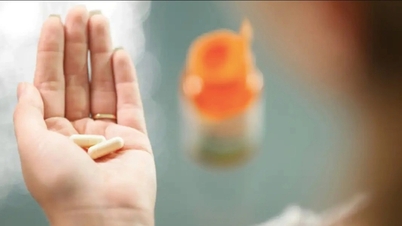
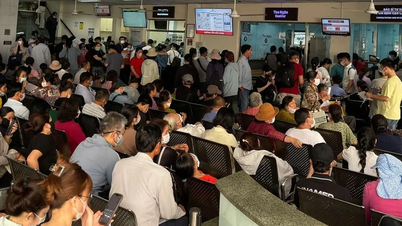






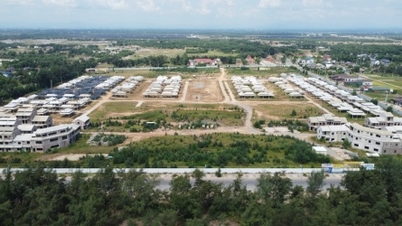

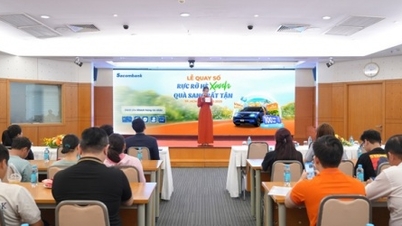












































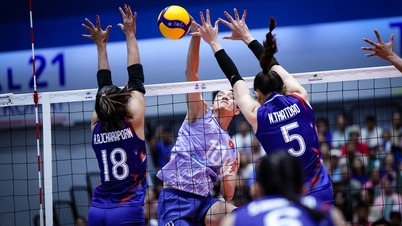












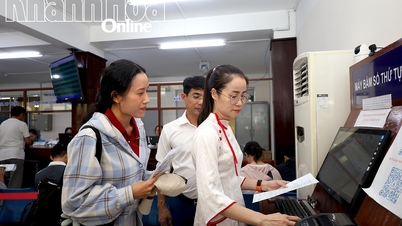





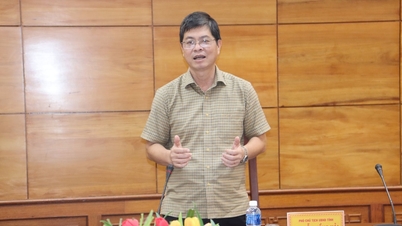














Comment (0)